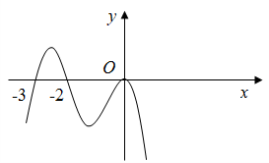Read the following passage and mark the letter A, B, C, or D on your answer sheet to indicate the correct answer to each of the questions:
There are a number of natural disasters that can strike across the globe. Two that are frequently linked to one another are earthquakes and tsunamis. Both of them can cause a great amount of devastation when they hit. However, tsunamis are the direct result of earthquakes and cannot happen without them.
The Earth has three main parts. They are the crust, the mantle, and the core. The crust is the outer layer of the Earth. It is not a single piece of land. Instead, it is comprised of a number of plates. There are a few enormous plates and many smaller ones. These plates essentially rest upon the mantle, which is fluid. As a result, the plates are in constant - yet slow - motion. The plates may move away from or toward other plates. In some cases, they collide violently with the plates adjoining them. The movement of the plates causes tension in the rock. Over a long time, this tension may build up. When it is released, an earthquake happens.
Tens of thousands of earthquakes happen every year. The vast majority are so small that only scientific instruments can perceive them. Others are powerful enough that people can feel them, yet they cause little harm or damage. More powerful earthquakes, however, can cause buildings, bridges, and other structures to collapse. They may additionally injure and kill thousands of people and might even cause the land to change its appearance.
Since most of the Earth’s surface is water, numerous earthquakes happen beneath the planet’s oceans. Underwater earthquakes can cause the seafloor to move. This results in the displacement of water in the ocean. When this occurs, a tsunami may form. This is a wave that forms on the surface and moves in all directions from the place where the earthquake happened. A tsunami moves extremely quickly and can travel thousands of kilometres. As it approaches land, the water near the coast gets sucked out to sea. This causes the tsunami to increase in height. Minutes later, the tsunami arrives. A large tsunami - one more than ten meters in height - can travel far inland. As it does that, it can flood the land, destroy human settlements, and kill large numbers of people.
Question: What is the passage mainly about?
A: When earthquakes are the most likely to happen
B: What kind of damage natural disasters can cause
C: How earthquakes and tsunami occur
D: Why tsunamis are deadlier than earthquakes
Đáp án C
Bài đọc chủ yếu nói về điều gì?
A. Khi nào động đất có khả năng xảy ra nhất.
B. Loại phá hủy nào mà thảm họa tự nhiên có thể gây ra.
C. Động đất và sóng thần xảy ra như thế nào.
D. Tại sao sóng thần nguy hiểm chết người hơn động đất.
=> How earthquakes and tsunamis occur.

